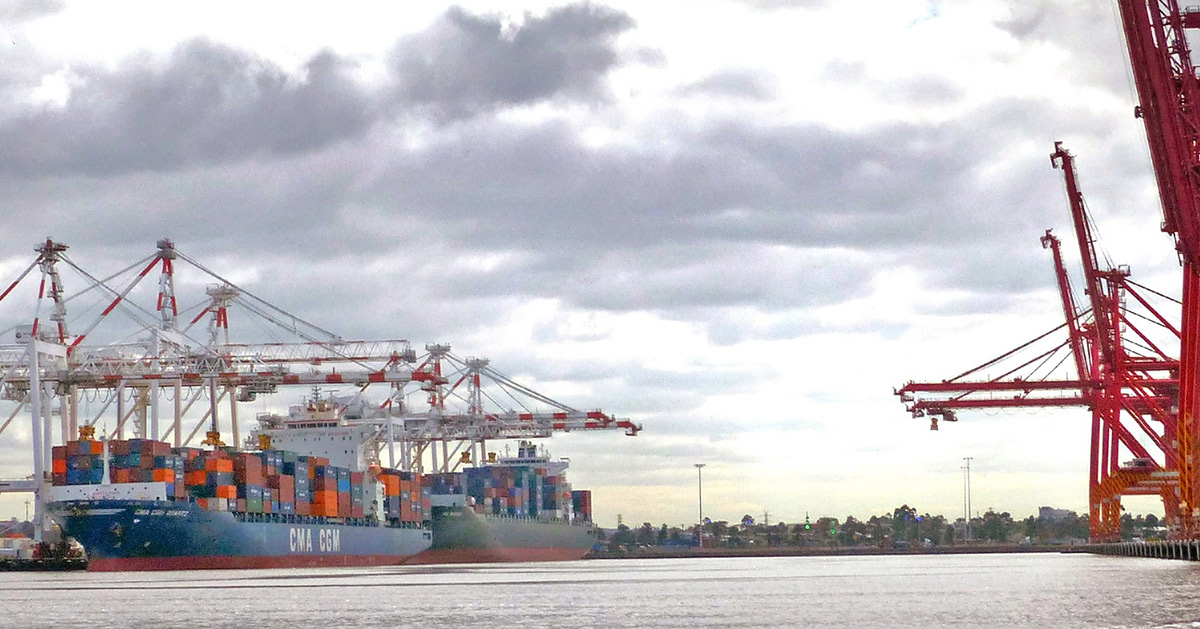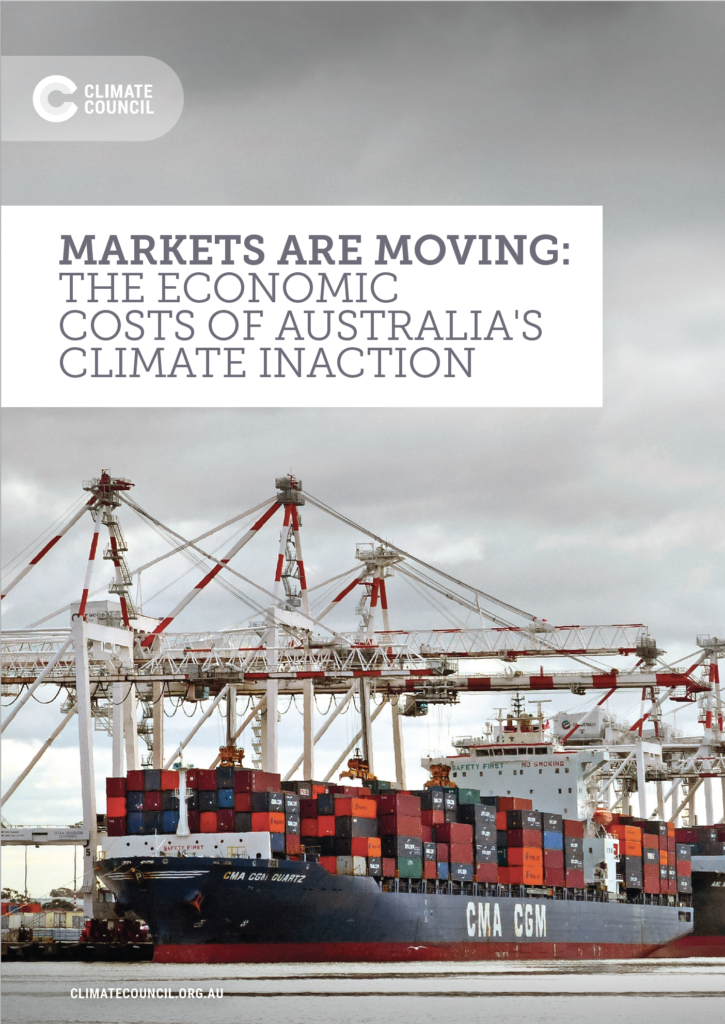We are already counting the costs from climate-driven disasters such as bushfires, droughts, cyclones, and flooding. These worsening climate impacts do not only cause physical damage to property. Economic activity is disrupted, productivity is lost, and health costs – both physical and mental – rise. All told, these disasters are estimated to have led to global economic losses of A$272 billion in 2020, according to Munich Re research.
Acting swiftly on climate change matters. Failing to rapidly cut emissions this decade is forecast to lead to exponential increases in the costs of climate change over multiple generations. One estimate puts global economic losses of failing to act at A$24.1 trillion per year by 2100. For Australia, the figure is A$129 billion per year.
The Australian Government has failed to recognise the costs of climate change, and similarly, the significant economic opportunities in acting swiftly and early on climate change. In contrast, carbon border tariffs are now inevitable with Australia in the firing line due to our slow and weak national progress in cutting greenhouse gas emissions. The question isn’t whether we should act on climate change, but rather, when will we choose to do so? Every day we delay, we pay a heavier price.
This report looks at the economic impact that carbon border tariffs could have on Australia’s economy if we do not take appropriate measures to act on climate change now in line with our key trading allies.
Key Findings:
1. The world is moving to respond to the climate crisis with carbon border tariffs now inevitable. Australians will pay a price due to our slow and weak national progress in cutting greenhouse gas emissions.
- The European Union has already announced a Carbon Border Adjustment Mechanism (CBAM) and this is expected to be the first of many such schemes as countries seek to re-level the playing field on climate action.
- Such moves are being considered by other jurisdictions, including Australia’s key trading partners, as countries readjust their response in line with the urgency of the climate challenge.
- As one of the world’s heaviest per capita emitters, and an advanced economy, Australia is under increasing international pressure to use its natural advantages to cut emissions rapidly and deeply this decade and help the world reach net zero as quickly as possible.
- Australians are already wearing considerable climate costs related to worsening extreme weather. Under a high emissions scenario, the costs of more frequent and severe events such as bushfires, storms and floods, as well as longer-term trends such as rising sea levels and average temperatures, could rise to $94 billion per year for Australia by 2060 and $129 billion per year by 2100.
2. Economic modelling shows that carbon border tariffs will reduce demand for Australian exports, lower economic growth and put thousands of Australian jobs at risk.
- Australia will experience a cut to our Gross Domestic Product (GDP) from the EU’s CBAM. If South Korea, China and the Group of 7 (G7) follow suit our GDP losses will reach more than $4 billion. The loss to national income is more than $12.5 billion, representing a loss in living standards. Several thousand jobs are also at risk.
- The impacts will not be even across states, or sectors, with Queensland and New South Wales to bear the brunt due to the dominance of targeted export goods – particularly coal – produced in those states.
- If South Korea, China and the G7 follow the EU in introducing CBAMs, Queensland could lose more than 50,000 jobs, while in NSW around 20,000 jobs would be at risk. Under this scenario, Queensland is projected to lose more than $10 billion in Gross State Product, and NSW more than $5 billion.
- Such economic losses will be compounded by other factors such as a rise in the cost of capital which will result in falling public and private investment; dragging down growth and employment further.
3. Every day that the Australian Government delays climate action it is hurting households and businesses in missed economic opportunities and rising costs.
- By failing to act on climate change and promote low emissions industries, Australia is missing out on significant economic opportunities as global demand for clean products accelerates. For example, Sweden is providing green steel for Volvo, while the Canadian Government has announced it will become a world leader in carbon neutral cement in partnership with that industry.
- Modelling by Deloitte Access Economics suggests support for a low carbon economy in Australia will add $680 billion in economic growth and 250,000 new jobs by 2070.
- The green economy in the UK is now estimated to be worth almost $A400 billion, which is four times bigger than the manufacturing sector, and growth is forecast to increase by 6.7% a year over the five years to 2025-26.
- A growing number of countries have a carbon price which requires those responsible for creating emissions to pay for them. As such carbon prices continue to rise over time in the face of stronger global commitments on net zero, the costs of failing to act will also rise.
- The science is clear that all countries must slash emissions this decade, with the Climate Council recommending a 75% cut this decade for Australia on the way to net zero by 2035. As a first step, the federal government should at least match the commitments of our key allies, and pledge to
Chip in a donation today to amplify the findings of our report, and put pressure on the Federal Government to cut emissions this decade.












